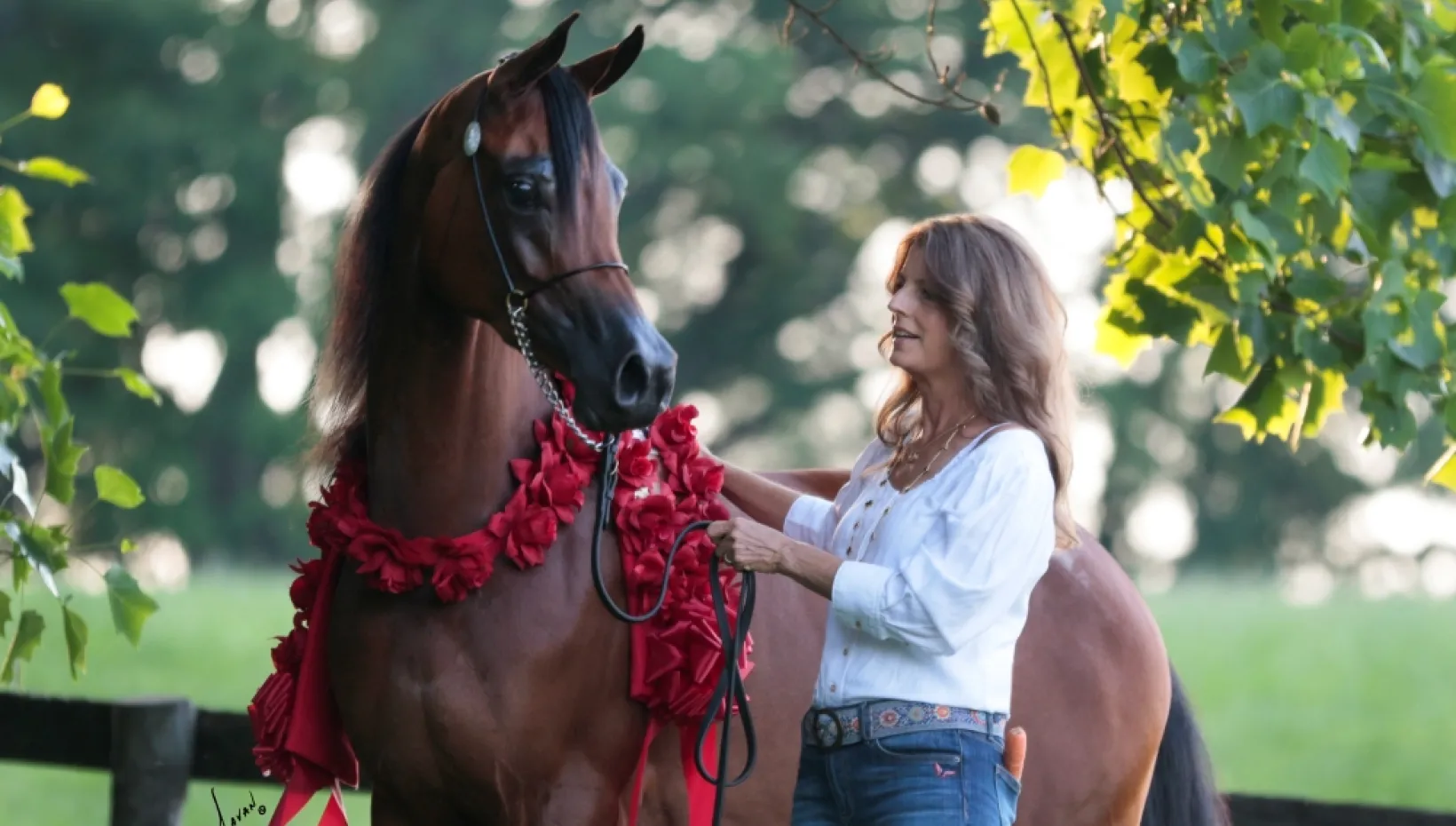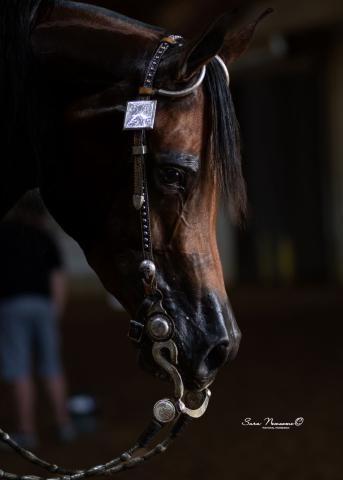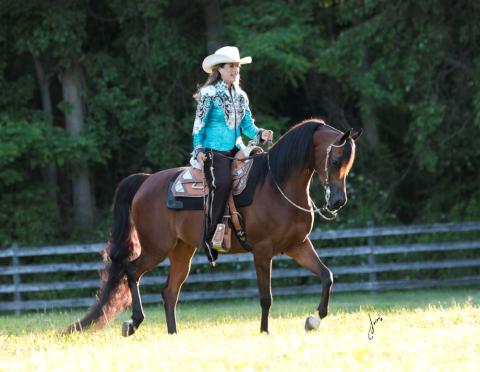Hope “reins” for Arabian champion

Article by: Lisa Lopez Snyder
Originally Published
When West Grove, Pennsylvania-based Arabian breeders Lisa Gaudio and husband Jim Kazanjian took Mikkella, their 8-year-old U.S. Nationals Champion Arabian, to a show in 2022, they noticed that her right foreleg was swollen.
“We thought maybe she pulled something,” Gaudio says. “We wrapped her leg and did several things to reduce the swelling. There was some improvement, but ultimately, nothing was working.” Later, Mikkella received an ultrasound and radiographs at the University of Pennsylvania’s Penn Vet's New Bolton Center, but the imaging did not indicate anything of significant concern.

After a second visit, an MRI revealed a mass in her flexor tendon sheath, that was later identified as a mast cell tumor. The New Bolton team performed surgery to remove the mass but could not remove it entirely. Mikkella returned to training, but it wasn’t until a show in 2023 that Gaudio noticed the swelling had worsened.
The New Bolton Center team, led by James Orsini, DVM, DACVS, contacted the Ohio State Veterinary Medical Center’s Radiation Oncology and Galbreath Equine Surgery Service teams.
Gaudio says seeking further consultation with an academic veterinary medical center like Ohio State was critical in addressing Mikkella’s tumor. It was also special knowing that Mikkella’s case was a part of the students’ and residents’ learning experience.
“We felt that Ohio State had the best doctors, knowledge, and facilities to use the linear accelerator to treat the tumor,” she says. “We knew this worked in small animals, so it was worth the shot.”
The Ohio State team included Eric Green, DVM, DACVR, professor of diagnostic imaging and radiation oncology and Endowed Professor of Excellence in Veterinary Care, and Margaret Mudge, VMD, DACVS, DACVECC, professor and section head of equine emergency, critical care and surgery, who discussed the MRI and ultrasound images and results with the New Bolton Center team.
Both teams determined that the tumor had started to grow back. Green suggested that once Mikkella’s treatment site had reasonably healed, radiation therapy at Ohio State would be the best option to control the remaining disease that couldn’t be removed surgically.
Green says mast cell tumors in horses are rare, particularly in the carpal flexor tendon sheath, a tendon sheath that extends from above the knee down to the mid-section of the foreleg.
“We see mast cell tumors in dogs all the time, but we don’t see them very commonly in horses. In our dog patients, radiation therapy has been shown to be very effective at treating mast cells, so we extrapolated that information to our horse patients,” he says.
“I have treated one other mast cell tumor in a horse in a different location that responded incredibly well to radiation therapy, so we had every reason to believe that it would have a similar effect for Mikkella. Mast cells tend to be very sensitive to radiation and are easily destroyed,” says Green.

In June 2023, the Ohio State team performed a 12-treatment course of radiotherapy to treat the tumor successfully. The procedure involved using the linear accelerator, which delivers high-dose radiation to the targeted area without seriously affecting surrounding healthy tissue.
Green and his team performed the first of 12 treatments with resident Christopher Bloom, DVM.
Dah-Renn Fu, BVM, MVM, PhD, MS, DACVR, assistant professor of radiation oncology, and Bloom delivered the remaining treatments over nearly four weeks, three times a week. The treatments consisted of two parallel opposed beams of radiation centered on Mikkella’s lesion to target the original tumor and avoid the bones of her carpus and skin.
Hilary Rice, DVM, MS, DACVS-LA, assistant professor of equine surgery, led the team monitoring Mikkella’s condition between her treatments, which included Caitlin Moreno, DVM, MS, assistant professor of equine surgery, who was then a resident.
Veterinary students on the equine surgery rotation conducted daily physical examinations along with residents and Rice provided oversight of Mikkella’s care. The team monitored Mikkella’s comfort level and anesthesia recovery and ensured she ate well, following Gaudio's specific diet.
Rice found the collaboration with the New Bolton Center partners and the various Veterinary Medical Center services – Radiation Oncology, Equine Surgery, and Anesthesia – highly rewarding. He added that the collaboration with Gaudio, who ensured Mikkella received the best possible care, was also greatly appreciated.
Gaudio recalled a tearful but happy reunion with Mikkella at the end of her treatment and is thankful for Ohio State’s work and care. With Mikkella back home and “under saddle,” Gaudio expects the mare will be ready to show next year.
“They were all wonderful about updating me every day. That gave me comfort,” she says. “I knew they looked after her. She looked incredible when she came home.”
Gaudio also stressed the importance of sharing Mikkella’s story.
“If it happens to another person with a horse, I hope they see this and understand that there are other options out there.”
Mikkella’s case exemplifies The Ohio State University College of Veterinary Medicine’s ambition to Be The Model® comprehensive college of veterinary medicine and referral center of choice by delivering cutting-edge care in partnership with referring veterinarians and clients.